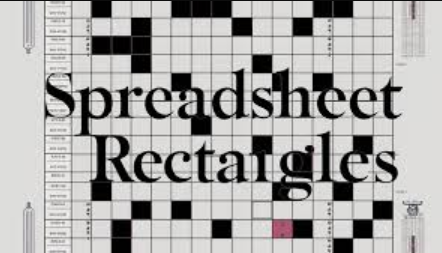Introduction
Spreadsheet Rectangles, as featured in the New York Times (NYT), offers a unique perspective on the world of data visualization and manipulation through spreadsheets. This concept delves into the importance of visual organization within spreadsheets, an essential tool used daily in various industries, from finance to marketing. In this article, we’ll explore the concept, its significance, and how you can apply it to enhance your own data management practices.
What Are Spreadsheet Rectangles?
Spreadsheet rectangles refer to the visual and functional organization of data within a spreadsheet, typically in software like Microsoft Excel or Google Sheets. In these tools, data is arranged in cells, which are the building blocks of rows and columns. The intersection of these rows and columns forms rectangles, which can represent anything from simple data points to complex datasets.
- Data Organization: Rectangles help in organizing data logically, making it easier to read and analyze.
- Visual Clarity: By grouping related data into these rectangles, users can create a more visually appealing and understandable spreadsheet.
Why Spreadsheet Rectangles Matter
The importance of spreadsheet rectangles lies in their ability to simplify complex data, making it accessible to users of all levels. Here’s why they matter:
- Improved Data Interpretation: Properly organized rectangles allow for quicker interpretation of data, as related information is visually grouped together.
- Enhanced Efficiency: When data is organized into rectangles, users can navigate through spreadsheets more efficiently, reducing time spent searching for specific data points.
- Error Reduction: Grouping data into rectangles minimizes the risk of errors, as related information is kept together, reducing the chances of misinterpretation or misplacement.
How to Implement Spreadsheet Rectangles Effectively
To make the most out of spreadsheet rectangles, follow these best practices:
- Group Related Data: Always group related data together in one rectangle. This could be financial data, marketing metrics, or inventory lists. Keeping related data in one area makes it easier to analyze.
- Use Headers Wisely: Clearly label each rectangle with headers. This helps in identifying the type of data within that rectangle at a glance.
- Leverage Conditional Formatting: Use conditional formatting to highlight specific rectangles based on data conditions, like high sales or low inventory levels. This visual cue can help in quickly identifying key areas that need attention.
- Keep It Simple: Avoid overcomplicating your spreadsheet with too many rectangles. Stick to essential groupings to maintain clarity.
Real-World Applications of Spreadsheet Rectangles
Spreadsheet rectangles are not just theoretical; they have practical applications across various industries:
- Finance: Accountants and financial analysts often use rectangles to separate different types of financial data, such as revenue, expenses, and profit margins, for clearer analysis.
- Marketing: Marketers can group data by campaigns, channels, and performance metrics, making it easier to track and compare results.
- Inventory Management: Rectangles can be used to manage stock levels, categorize products, and track orders efficiently.
FAQs
1. What is the purpose of organizing data into rectangles in spreadsheets?
Organizing data into rectangles enhances visual clarity, simplifies data interpretation, and improves efficiency by grouping related information together.
2. Can I use spreadsheet rectangles in any type of spreadsheet software?
Yes, spreadsheet rectangles can be implemented in any software that allows for data organization in rows and columns, such as Microsoft Excel or Google Sheets.
3. How do spreadsheet rectangles reduce errors?
By grouping related data together and using clear labels, spreadsheet rectangles minimize the risk of misinterpretation or misplacement of data, thereby reducing errors.
Conclusion
Spreadsheet rectangles, as discussed in the New York Times, offer a powerful approach to organizing and visualizing data. By implementing these strategies, you can enhance your efficiency, reduce errors, and make your data more accessible. Whether you’re managing finances, marketing campaigns, or inventory, the principles of spreadsheet rectangles can help you take your data management to the next level.




